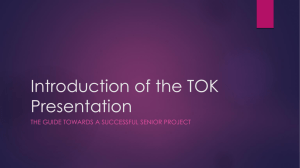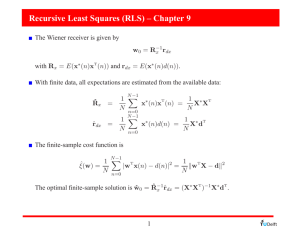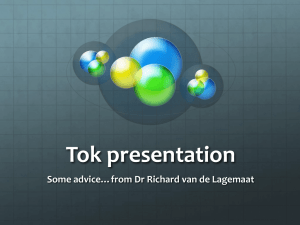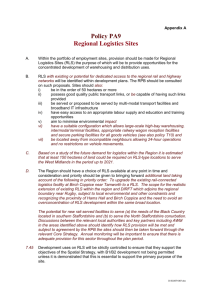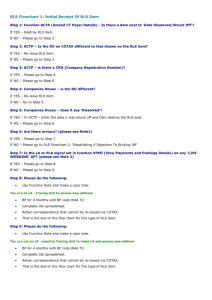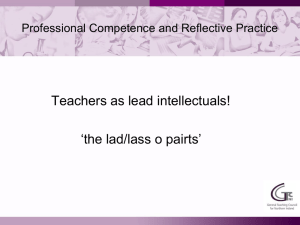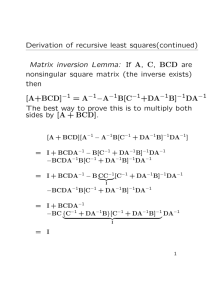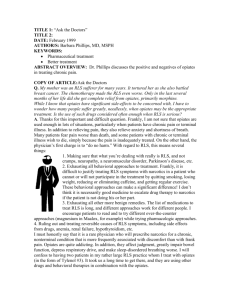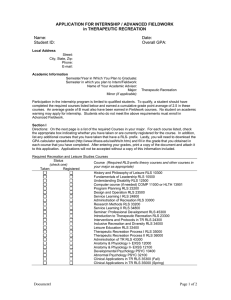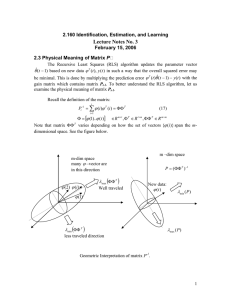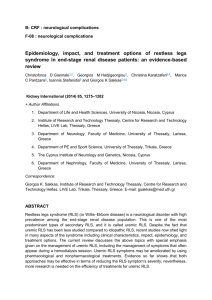Your Presentation-Do and Don`t
advertisement
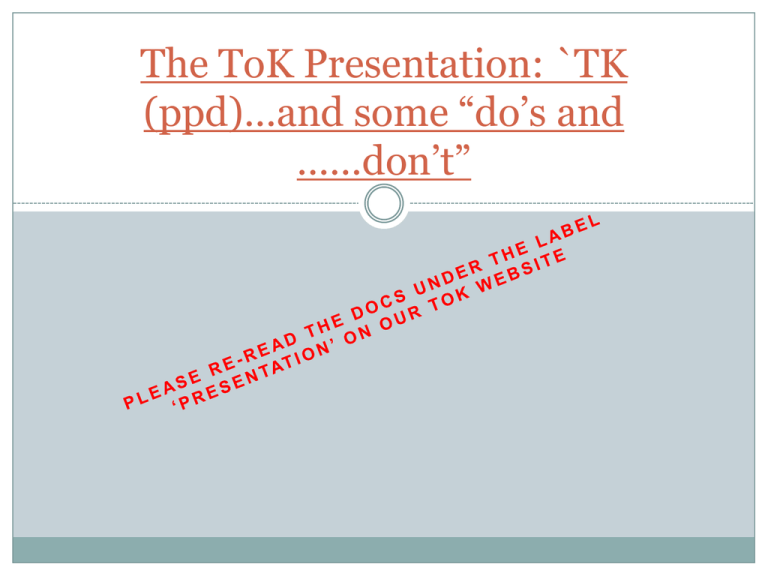
The ToK Presentation: `TK (ppd)…and some “do’s and ……don’t” TK/PPD: 5 things you must do Complete this carefully. It is a worded version of the planning flow chart you used for your practice presentation. It requires you to do 5 things: 1. Describe your real life situation 2. State your central knowledge question (this must be expressed as a question). 3. Explain the connection between your real life situation and your knowledge question TK/PPD: 5 things you must do 4. Outline how you intend to develop your presentation, with respect to perspectives, subsidiary knowledge questions, arguments etc. Responses below can be presented in continuous prose or as bullet points. 5. Show how your conclusion have significance for your real life situation and beyond. Do…and ….don’t with a little bit of ‘try this’… DO…What you must do….(please use with master flow chart on the ToK website…. Perspective Knowledge fallacy rls Kq Tip: have key words In your KQ Refer to relevant wok/aok Relate to other RLS Connect with original rls: conclude How is knowledge determined from this perspective? Evaluate. Perspective Knowledge fallacy Any personal relevance Other RLS Do… + + + Read/review the notes I have put on the website under the tab “Presenatation’. Introduce your presentation with a brief overview of what exactly you will present….this is stylistic and will vary from candidate to candidate. State K.Q. clearly Present 2 perspectives that are relevant to the K.Q. Define key terms as you use them Follow the flow chart model we have used very carefully or alternatively use the TK/PPD 5 points to structure your presentation. Make clear efforts to establish 2 perspectives in relation to your knowledge question as detailed in the ToK Presentation flowchart. Follow the process outlined in the flow chart. Try to spot generalisations/bias/cultural differences/fallacies in relation to knowledge that are relevant to your RLS Paradigm Shift: is this relevant to your analysis? Consider the ‘knowledge fallacies’ that may connect with the RLS Question the Knowledge (woks) associated with the RLS. (Historians know this because…) Try and use any ‘personal’ applications where possible. (Have you had a relevant experience in connection with your research?) Make a clear conclusion bringing your findings back to your RLS (what have we learned from your investigation?) Make sure your presentation is downloaded and not reliant on appropriate bandwidth on the Internet system In your knowledge question try to input “key words” e.g. in our tsunami flowchart presentation the word ‘prediction’ facilitated the development of two perspectives in relation to prediction theory. This allow your investigation of knowledge to be examined from different perspectives. Talk to me prior to your Presentation. Don’t… (- )(-) (-) Don’t read from woks without making whiteboard reference to ‘KNOWLEDGE’ Do not make singular connections between And now I am going to your K.Q. and isolated do “History”…. And now WOKS or AOKS without I am going to do “Ethics” referring to KNOWLEDGE List a series of connections to Aoks and Try to..! Try to mix your application of WOKS and AOKS to your RLS/KQ Consider appropriate use of live media (podcasts etc) to support your investigation Engage your audience Look at your audience Speak slowly and coherently Point out specific key points that appear on your slides Use less words on your slides ( too many words loses the connection with the audience)
